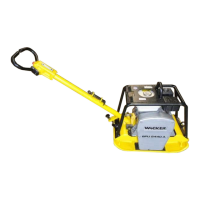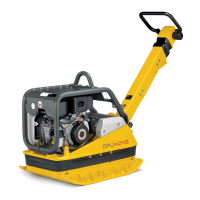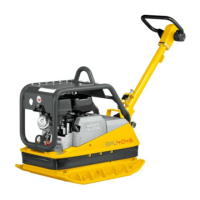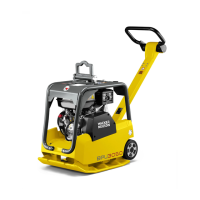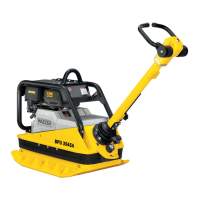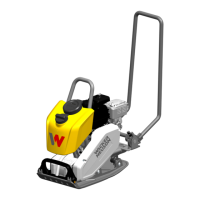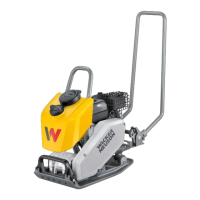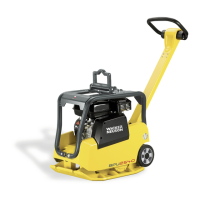
Do you have a question about the Wacker Neuson BPU 2540A and is the answer not in the manual?
| Frequency | 90 Hz |
|---|---|
| Centrifugal Force | 5, 620 lb |
| Working Width | 400 mm |
| Operating weight | 145 kg |
| Engine | Honda GX160 |
| Fuel Type | Gasoline |
| Vibration Frequency | 90 Hz |
| Amplitude | 0.5 mm |
| Fuel Tank Capacity | 3.1 L |
Introduction to the operator's manual and its importance for safe operation.
Discusses state of the art, proper use, and structural modifications for safety.
Lists prerequisites for safe operation of the machine.
Covers operation, supervision, and general operational guidelines.
Highlights maintenance importance and actions for malfunctions.
Procedure for inspecting the machine for damage before and during operation.
Details on personnel qualifications required for safe machine operation.
Addresses incorrect operation, company responsibilities, and work recommendations.
Details cases where the manufacturer will refuse liability for damage or injuries.
Importance of the operator's manual and country-specific safety regulations.
Guidance on operator controls and safe cleaning procedures for the machine.
Guidelines on appropriate work clothing and personal protective equipment (PPE).
Instructions for switching off the machine and securing it for transport.
Safe procedures for lifting and loading the machine onto a transport vehicle.
Guidelines for suitable transport vehicles and securing the machine.
Procedures for restarting and general operating safety, including explosive environments.
Familiarization with work environment and safety in the work area.
Guidance on starting, vertical stability, operator position, and danger zones.
Warning about keeping clear of moving machine parts to prevent serious injury.
Procedures for switching off the machine and selecting a storage location.
Addresses starter sprays, vibrations, belt guards, falling, and ground capacity.
Safety measures to avoid crushing and guidelines for compacting on slopes.
Limits on tilt position and considerations for vibration effects on buildings.
Checking for engine damage, dangers during operation, and fire prevention.
Precautions for safe refueling, including ventilation and avoiding spills.
Safety in closed rooms, caution with hot parts, and shutting off the fuel tap.
Guidelines for cleaning the engine safely, avoiding solvents.
Notes on EPA engines and health hazards due to exhaust fumes.
Handling hydraulic oil safely to avoid health hazards and contamination.
Procedures for maintenance work and switching off the engine.
Procedures for reassembling and checking safety devices after maintenance.
Guidelines for safely handling fuels, oils, greases, and coolants.
Importance of safety labels, their legibility, and replacement.
Provides technical specifications for the machine, including dimensions, weight, and performance data.
Details on the drive motor, including type, displacement, fuel, and oil requirements.
Technical details regarding the exciter, including vibrations, force, and oil.
Technical details for the hydraulic system, including oil specification and quantity.
Explains the working principle of the vibratory plate, including components and operation.
Guidelines for safely transporting the vibratory plate to the work site.
Advice on compaction based on ground conditions and slopes.
Checks required for the engine, air cleaner, and fuel before starting operation.
Step-by-step instructions for starting the vibratory plate's engine.
Procedure for operating the engine after starting, including choke and throttle adjustments.
How to control the machine's direction and speed using the operating levers.
Instructions for safely stopping the engine under normal and emergency conditions.
Overview of maintenance jobs and their recommended intervals.
Procedures for checking and changing the engine oil, including disposal advice.
Checking and filling the hydraulic fluid for the control system.
Procedures for checking and changing exciter oil and maintaining the V-belt.
Cleaning the fuel strainer cup and servicing the spark plug.
Steps for adjusting the carburettor for optimal engine performance.
Instructions for cleaning and replacing the air filter elements.
Diagnosing and fixing issues with reverse and forward speed.
Diagnosing and fixing issues with no advance, hydraulic oil loss, and engine start.
Information on approved percentages of oxygenates (ethanol, methanol) in fuels.


